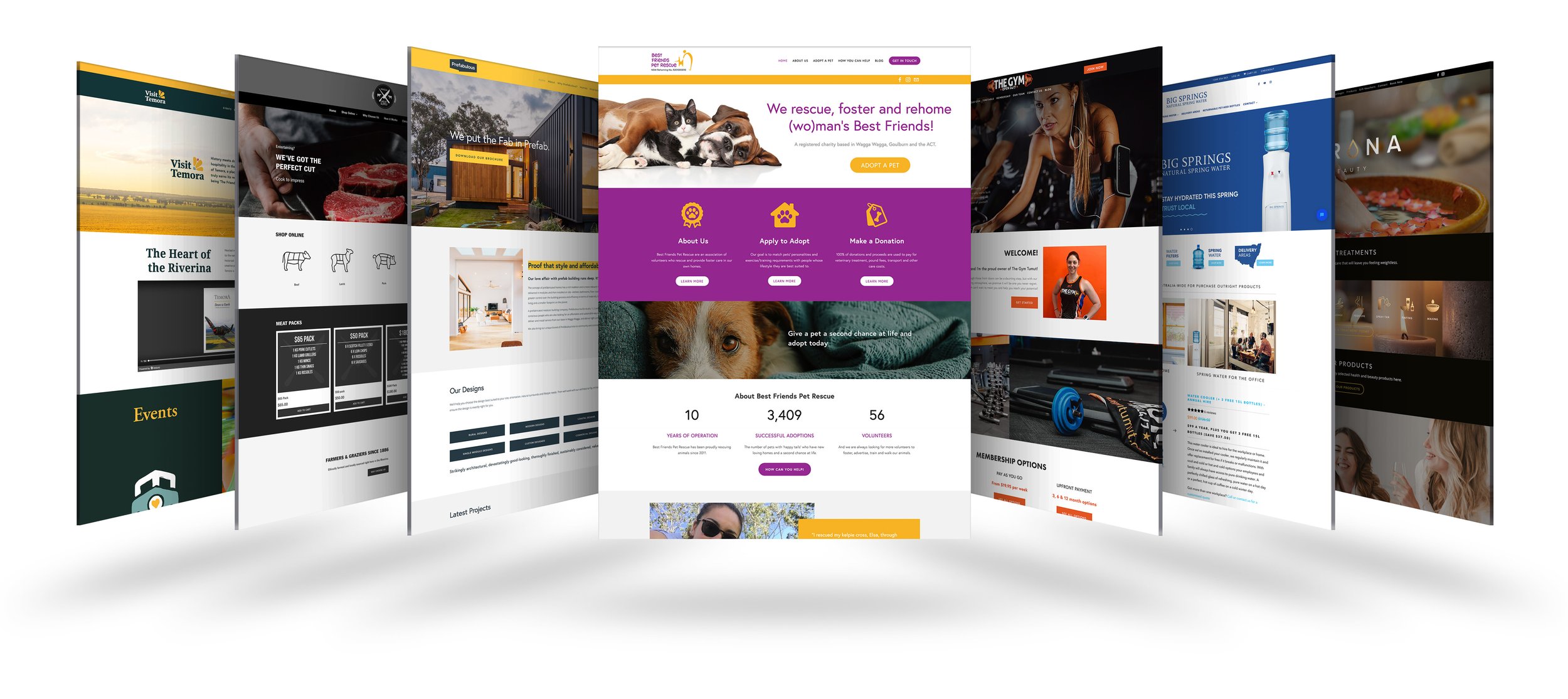End-to-End Website Design Solutions from Concept to Completion
End-to-End Website Design Solutions from Concept to Completion
Blog Article
Top Tips for Creating an Impactful Web Site Design That Converts
To achieve this, one have to think about a variety of factors, consisting of recognizing the target audience, focusing on individual experience, and optimizing for mobile platforms. The tactical use of compelling call-to-actions and a distinct aesthetic pecking order plays a critical duty in assisting users through their journey.

Understand Your Target Target Market
Recognizing your target market is essential to effective site layout, as it lays the foundation for creating an engaging individual experience. Determining that your customers are, including their demographics, choices, and behaviors, enables designers to tailor the web site's material, format, and functionality to meet certain demands.
Conducting detailed marketing research is vital in this process. Studies, interviews, and analytics can give important understandings into individual assumptions and discomfort points. By assembling this information, developers can develop user personalities that represent different sections of the target market, guaranteeing that style choices are notified and appropriate.
Moreover, recognizing the target market aids in selecting suitable style aspects such as color design, typography, and imagery that resonate with customers. A web site that speaks straight to its target market promotes a sense of link and depend on, motivating longer check outs and higher conversion prices.
Eventually, a user-centered method to website layout not just enhances customer contentment however also sustains organization goals by driving interaction and loyalty. By prioritizing the demands and choices of the target audience, an internet site can successfully serve its objective and attain preferred results.
Prioritize Customer Experience
To boost the general effectiveness of a website, prioritizing customer experience (UX) is necessary (Website Design). A properly designed UX makes sure that visitors can browse the site effortlessly, discover information promptly, and involve with content meaningfully. This leads to increased customer contentment and higher conversion rates
Begin by applying user-friendly navigation. Menus must be logically structured, enabling customers to find vital areas of the website with marginal initiative. Uniformity in design aspects, such as color design and fonts, fosters knowledge, which is crucial for preserving individual interaction.
In addition, take into consideration the loading speed of your website. A delay of just a few seconds can result in considerable drop-offs, as individuals are much less most likely to wait on a slow-loading page. Enhancing photos and maximizing code can boost efficiency and retain visitors.
By prioritizing user experience, you not just create an extra enjoyable setting for visitors but additionally strengthen your brand name's trustworthiness. Ultimately, an emphasis on UX is an investment in the long-lasting success of your website.
Enhance for Mobile Devices
Enhancing for mobile phones is important in today's electronic landscape, where an enhancing variety of customers access web sites via smartphones and tablets. A mobile-friendly style not just enhances user experience however additionally plays a significant role in enhancing search engine rankings. To attain this, it is necessary to embrace a receptive layout that instantly gets used to different screen dimensions and alignments.

Loading rate is an additional essential variable; mobile customers are commonly much less person and anticipate fast accessibility to info. Optimize photos and utilize web browser caching to improve efficiency. Test your website on numerous gadgets and display resolutions to recognize and correct any kind of prospective use problems. By prioritizing mobile optimization, you make certain that your site remains competitive and effectively involves a broader target market.
Usage Compelling Call-to-Actions
An internet site's effectiveness typically hinges on its capability to guide visitors toward wanted activities, making compelling call-to-actions (CTAs) essential parts of design. CTAs work as the essential points that route customers to involve with the site, whether that means making a purchase, registering for a newsletter, or downloading a source.
To develop effective CTAs, clarity is critical. Use Source concise language that clearly interacts the action you want the individual to take. Phrases such as "Start," "Subscribe Free," or "Shop Now" why not try these out not only convey urgency yet additionally eliminate ambiguity. The positioning of CTAs is just as vital; they should be strategically placed throughout the page to guarantee they are conveniently visible, especially in high-traffic locations.
Additionally, the design of CTAs should stand apart without being noticeable. Employ contrasting shades and clear font styles to ensure they record interest. Furthermore, think about using directional signs, such as arrowheads or pictures, to direct users towards these switches. By concentrating on these aspects, businesses can considerably enhance individual engagement, driving conversions and inevitably accomplishing their website's objectives.
Concentrate On Visual Power Structure
Reliable website style counts heavily on a well-structured aesthetic pecking order that overviews users via content flawlessly. By organizing aspects in a fashion that prioritizes info, developers can boost user experience and assist in decision-making. This involves using dimension, color, contrast, and spacing tactically to accentuate one of the most vital components of a web page.
Making use of larger font styles for headings and subheadings develops a clear distinction in between different areas, allowing users to scan content effortlessly. Furthermore, using different shades for buttons and calls-to-action can capture individual interest and motivate communication. Whitespace is one more crucial component; it prevents clutter and enables users to concentrate on key messages without interruptions.
Images and graphics ought to complement the text while additionally sticking to the well-known power structure, enhancing the general message (Website Design). Consistency in design elements, such as shade systems and typography, additional enhances the visual hierarchy, making navigating instinctive

Conclusion
In conclusion, efficient web site layout demands a comprehensive understanding of the target audience, prioritization of individual experience, and mobile optimization. Eventually, a well-executed internet site design serves as an important part in driving customer activities and achieving business objectives.
Report this page